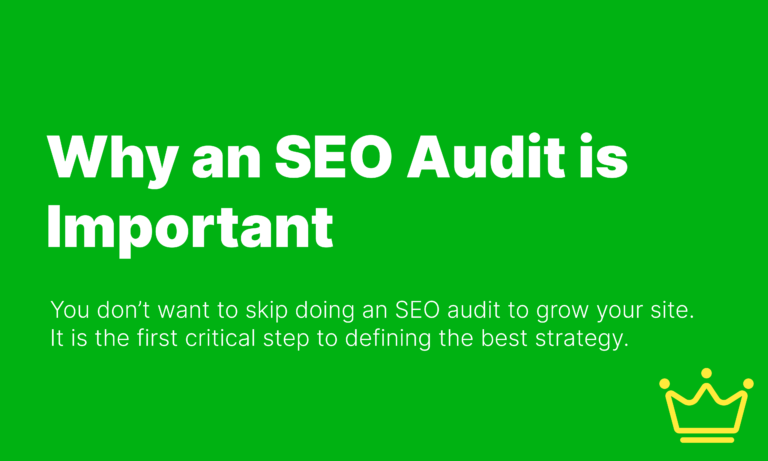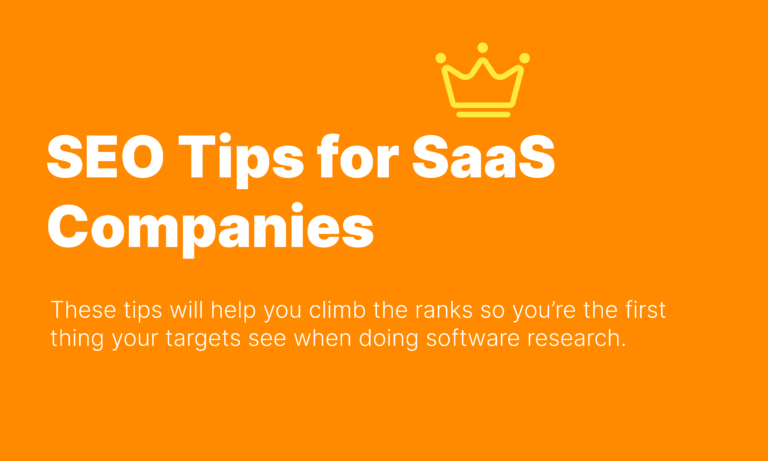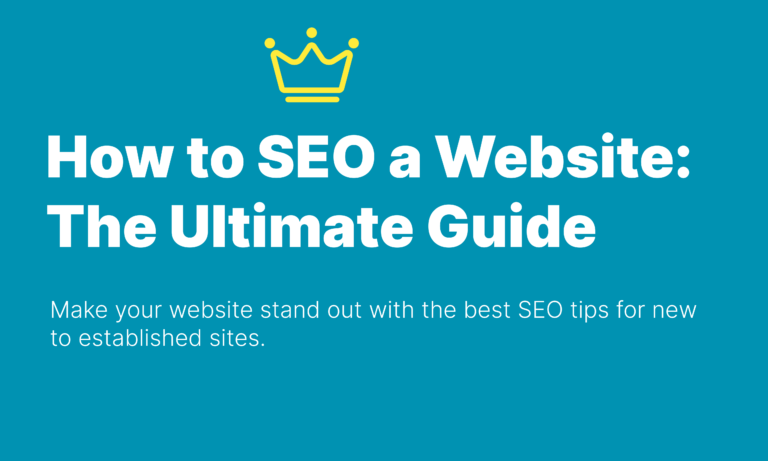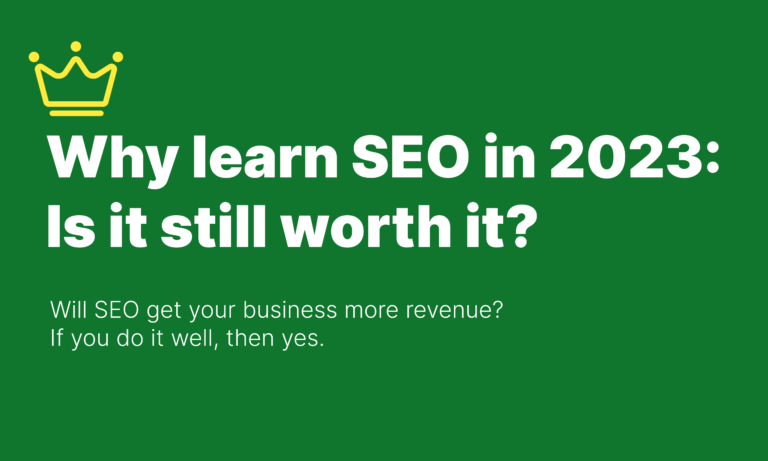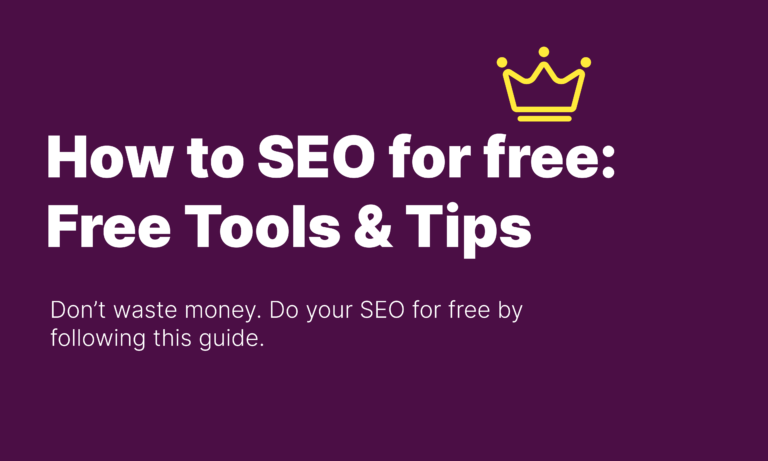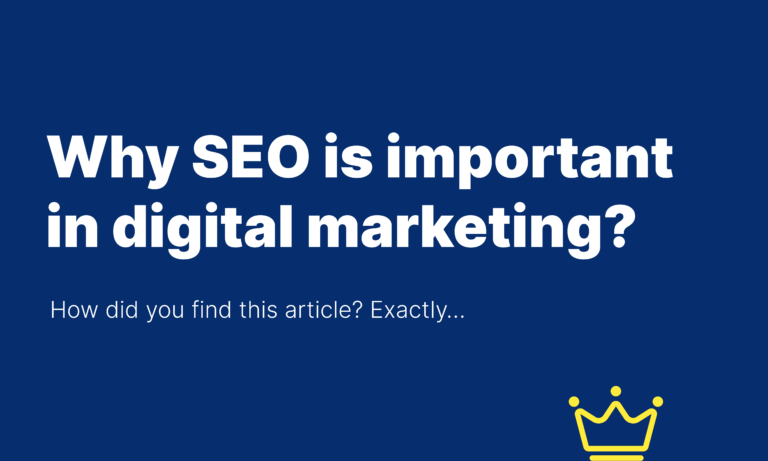10 SaaS SEO Mistakes Costing You Signups
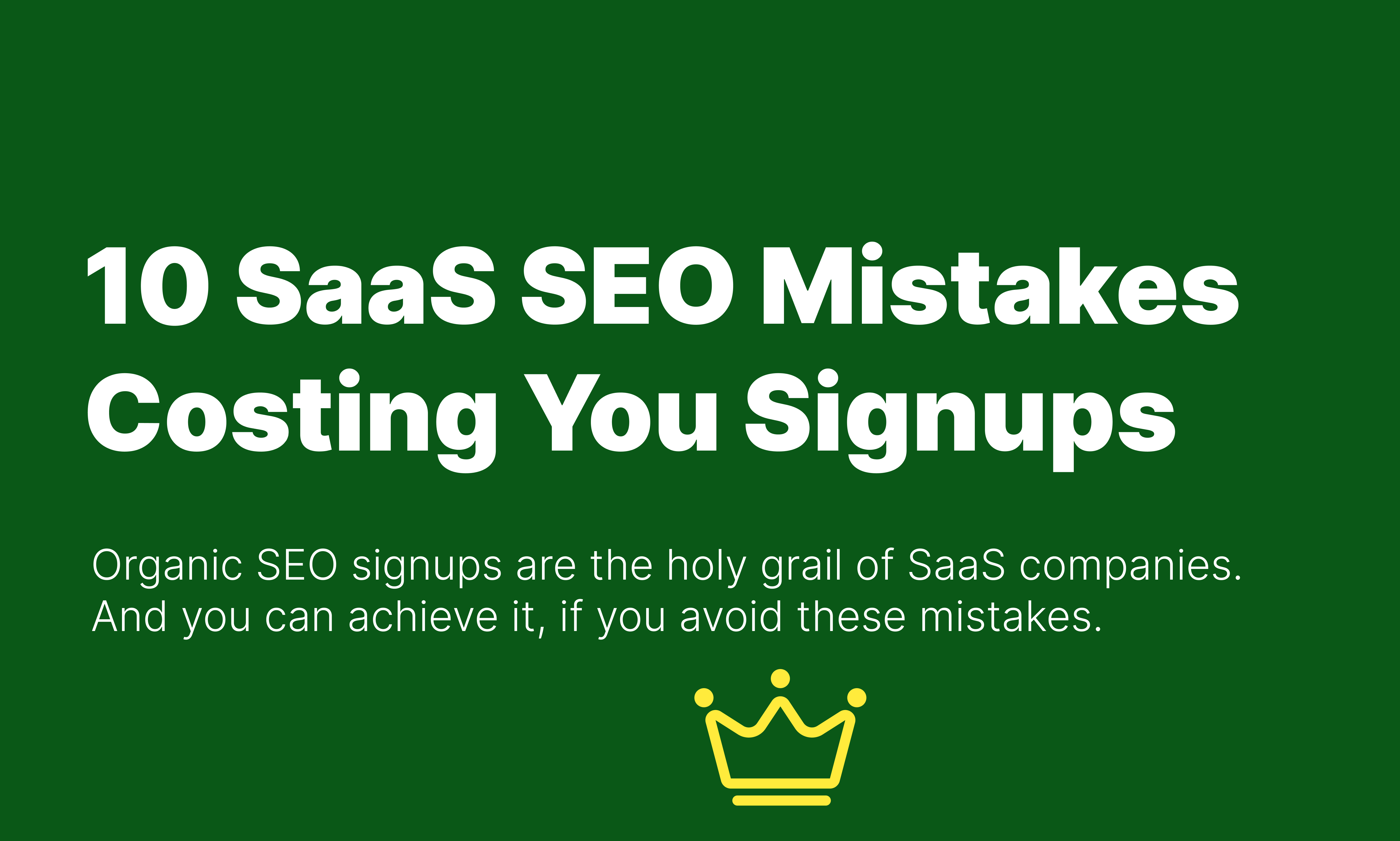
Organic SEO signups are the holy grail of SaaS companies. However, many make the same SaaS SEO mistakes that can hinder their visibility and success. Here, I’ll talk about 10 key SEO mistakes that SaaS companies often make and provide actionable tips to help you avoid them. By understanding these pitfalls and implementing effective SEO strategies, you can improve your website’s rankings, attract more organic traffic, and ultimately achieve your SaaS business goals.
10 SaaS SEO Mistakes Costing You New Customers
- Neglecting Keyword Research
- Creating Low-Quality Content
- Ignoring Technical SEO
- Overlooking Local SEO
- Not Building Backlinks
- Failing to Track and Analyze Results
- Prioritizing Quantity Over Quality
- Ignoring User Experience
- Not Adapting to Algorithm Changes
- Focusing Solely on Short-Term Gains
Why avoiding SaaS SEO mistakes is important
- SEO can have a 702% ROI for B2B SaaS companies.
- 81% of professionals say that SEO provides better quality leads than PPC.
- SaaS companies with content see about 30% higher growth rates than those not using content marketing.
- SEO can reduce the cost of customer acquisition by over 87%.
1. Neglecting Keyword Research
Keyword research is the foundation of successful SEO. It involves identifying the specific terms and phrases that your target audience is searching for when looking for a solution like your SaaS product. By understanding these keywords, you can optimize your content, website structure, and marketing efforts to appear higher in search engine results pages (SERPs).
Common SaaS SEO mistakes related to keyword research include:
- Using generic keywords: Instead of targeting broad terms like “software” or “app,” focus on more specific keywords that are relevant to your product, such as “project management software” or “customer relationship management tool.”
- Ignoring long-tail keywords: Long-tail keywords are more specific phrases that have lower search volume but often convert better because they target a more qualified audience.
- Not considering user intent: Understand why people are searching for certain keywords and tailor your content to address their specific needs and questions.
- Over-optimizing: Stuffing keywords into your content can actually harm your rankings. Focus on creating high-quality content that naturally incorporates relevant keywords.
Conduct thorough keyword research and use the insights effectively to significantly improve your website’s visibility and attract more organic traffic.
2. Creating Low-Quality Content
Search engines prioritize content that is informative, engaging, and relevant to user needs. Creating low-quality content can negatively impact your rankings and user experience.
Common SaaS SEO mistakes related to content quality include:
- Thin content: Content that is too short or lacks depth won’t provide value to users and may be penalized by search engines.
- Duplicate content: Having identical or nearly identical content on multiple pages can confuse search engines and lead to lower rankings.
- Keyword stuffing: Overusing keywords in your content can make it difficult to read and may be seen as spammy by search engines.
- Lack of originality: Rehashing existing content without adding your own unique perspective or insights won’t stand out in the competitive landscape.
To create high-quality content, focus on:
- Relevance: Ensure your content directly addresses the needs and interests of your target audience.
- Value: Provide useful information, tips, or solutions that solve problems or answer questions.
- Readability: Write clear, concise, and easy-to-understand content.
- Engagement: Use storytelling techniques, visuals, and interactive elements to keep readers interested.

We can do your content marketing
Uphill Content specializes in growing SaaS businesses, from early-stage to exit. Send us a message to learn how we can help.
3. Ignoring Technical SEO
Technical SEO refers to the behind-the-scenes optimizations that make your website accessible and easy for search engines to crawl and index. Neglecting technical SEO can hinder your website’s performance and visibility in search results.
Common technical SEO mistakes include:
- Slow page load times: Users and search engines both prefer websites that load quickly. Optimize your website’s speed by compressing images, minifying code, and leveraging a content delivery network (CDN).
- Mobile-friendliness: With the increasing number of mobile users, it’s essential that your website is optimized for smaller screens and touchscreens. Use responsive design or mobile-specific templates.
- Broken links: Broken links can frustrate users and negatively impact your website’s authority. Regularly check for and fix broken links using tools like Google Search Console.
- Duplicate content: Having multiple versions of the same content on your website can confuse search engines and lead to lower rankings. Implement canonical tags to indicate the preferred version.
- Poor site structure: A well-organized site structure with clear navigation helps search engines understand your website’s content and improves user experience.
- XML sitemap issues: An XML sitemap provides search engines with a map of your website’s content. Ensure your XML sitemap is accurate and up-to-date.
4. Overlooking Local SEO
Local SEO is essential for B2B SaaS companies that target a specific geographic area. It helps your SaaS business appear in local search results when potential customers search for relevant terms near their location.
Common SaaS SEO mistakes related to local SEO include:
- Incomplete or inaccurate Google My Business listing: Your Google My Business profile is the foundation of your local SEO efforts. Ensure that your listing is complete, accurate, and optimized with relevant keywords.
- Neglecting local citations: Local citations are mentions of your SaaS business name, address, and phone number (NAP) on third-party websites. Build citations by creating profiles on local directories, social media platforms, and review sites.
- Not optimizing for local keywords: Incorporate location-specific keywords (e.g., “SaaS company in [city]”) into your website content, meta descriptions, and titles.
- Ignoring local reviews: Positive reviews can significantly boost your local search rankings. Encourage customers to leave reviews on your Google My Business profile and other review platforms.
- Failing to monitor local search trends: Stay updated on local search trends and adjust your SEO strategy accordingly.
Increase your visibility among potential customers in your target area and drive more leads and sales by optimizing your local SEO.
5. Not Building Backlinks
Backlinks are links that point to your website from other websites. They are a crucial factor in SEO as they signal to search engines that your website is valuable and relevant.
Common SaaS SEO mistakes related to backlinks include:
- Low-quality backlinks: Building backlinks from low-quality or spammy websites can actually harm your rankings. Focus on acquiring backlinks from reputable and relevant websites.
- Lack of diversity: A diverse backlink profile, with links from various sources and domains, is more effective than having a large number of backlinks from the same website.
- Ignoring natural link building: Instead of relying solely on artificial link-building tactics, focus on creating high-quality content that naturally attracts backlinks.
- Not monitoring backlink profile: Regularly check your backlink profile for any harmful or low-quality links. Disavow any links that could negatively impact your rankings.
To build quality backlinks, consider these strategies:
- Guest blogging: Write guest posts for other websites in your industry and include links to your website.
- Broken link building: Find broken links on other websites and offer to replace them with links to relevant content on your website.
- Social media marketing: Share your content on social media platforms to increase visibility and attract natural backlinks.
- Directory submissions: Submit your website to relevant online directories.
- Influencer outreach: Collaborate with influencers in your industry to promote your content and earn backlinks.
6. Failing to Track and Analyze Results
Tracking and analyzing SEO results is essential for understanding the effectiveness of your SEO efforts and making data-driven decisions. Without proper tracking, you won’t be able to identify areas for improvement or measure your success.
Common SaaS SEO mistakes related to tracking and analysis include:
- Lack of tracking tools: Use tools like Google Analytics and Google Search Console to track your website’s traffic, rankings, and other key metrics.
- Not setting clear goals: Define specific SEO goals, such as increasing organic traffic, improving website rankings, or generating more leads. This will help you measure your progress and determine the success of your strategies.
- Focusing on short-term metrics: While it’s important to track short-term metrics like website traffic and keyword rankings, also consider long-term goals such as improving brand visibility and generating revenue.
- Ignoring user behavior: Track user behavior metrics like bounce rate, time on site, and pages per session to understand how visitors interact with your website.
- Not making data-driven decisions: Use the data you collect to make informed decisions about your SEO strategy. Identify areas for improvement, test new approaches, and optimize your website based on performance data.

Signup for our newsletter
Enter your email below to get the best SaaS, AI, and Marketing insights in your inbox.
7. Prioritizing Quantity Over Quality
Content quantity alone is not enough to succeed in SEO. While it’s important to have a steady stream of content, focusing solely on quantity can lead to subpar content that doesn’t provide value to users or rank well in search engines.
Common SaaS SEO mistakes related to prioritizing quantity over quality include:
- Producing low-quality content: Creating content that is poorly written, uninformative, or keyword-stuffed can harm your website’s reputation and search engine rankings.
- Ignoring user intent: Producing content that doesn’t address the needs and interests of your target audience will not resonate with readers and may not drive conversions.
- Ignoring content optimization: While quantity is important, it’s equally crucial to optimize your content for search engines by incorporating relevant keywords, improving readability, and building backlinks.
To achieve success in SEO, focus on creating high-quality content that:
- Provides value: Offers unique insights, solves problems, or answers questions for your target audience.
- Is well-written: Is clear, concise, and easy to understand.
- Is optimized: Incorporates relevant keywords and follows best practices for SEO.
- Is consistent: Regularly publish new content to keep your website fresh and engaging.
8. Ignoring User Experience
Search engines prioritize websites that are easy to navigate, load quickly, and provide a positive user experience. Ignoring UX can negatively impact your website’s rankings and user engagement.
Common UX mistakes include:
- Slow page load times: Users are more likely to abandon a website if it takes too long to load. Optimize your website’s speed by compressing images, minifying code, and using a content delivery network.
- Poor navigation: A confusing or difficult-to-navigate website can frustrate users and drive them away. Ensure your website’s navigation is clear, intuitive, and easy to follow.
- Mobile-unfriendliness: With the increasing number of mobile users, it’s essential that your website is optimized for smaller screens and touchscreens. Use responsive design or mobile-specific templates.
- Broken links: Broken links can lead to a frustrating user experience and negatively impact your website’s credibility. Regularly check for and fix broken links.
- Lack of clear calls to action: Make it easy for users to take the desired action, whether it’s making a purchase, signing up for a newsletter, or contacting your SaaS business.
- Overwhelming design: A cluttered or visually overwhelming design can be difficult for users to navigate and may distract from your content. Keep your website’s design clean and uncluttered.
Prioritizing user experience improves your website’s rankings, user engagement, and overall success.
9. Not Adapting to Algorithm Changes
Search engine algorithms are constantly evolving to provide users with the most relevant and helpful search results. Failing to adapt to these changes can negatively impact your website’s rankings.
Common SaaS SEO mistakes related to algorithm changes include:
- Ignoring algorithm updates: Stay informed about major algorithm updates and their potential impact on your website.
- Focusing on outdated SEO tactics: Avoid relying on outdated SEO techniques that may no longer be effective.
- Not monitoring rankings: Regularly track your website’s rankings to identify any significant changes that may be due to algorithm updates.
- Failing to adapt content: Update your content to align with the latest algorithm trends and user preferences.
- Over-optimizing for keywords: Avoid keyword stuffing or other black-hat SEO tactics that can be penalized by search engines.
To adapt to algorithm changes, focus on:
- Creating high-quality content: Produce valuable, informative, and engaging content that meets the needs of your target audience.
- Building a strong backlink profile: Acquire high-quality backlinks from reputable websites.
- Improving user experience: Ensure your website is easy to navigate, loads quickly, and provides a positive user experience.
- Staying updated on SEO trends: Keep up with the latest SEO best practices and industry news.
10. Focusing Solely on Short-Term Gains
While it’s important to achieve short-term SEO wins, focusing solely on immediate results can hinder your long-term success. It’s essential to invest in sustainable SEO strategies that will continue to benefit your SaaS business over time.
Common SaaS SEO mistakes related to focusing on short-term gains include:
- Over-reliance on black-hat SEO tactics: Using unethical or manipulative techniques to quickly improve rankings can lead to penalties from search engines.
- Neglecting technical SEO: Ignoring technical SEO issues can lead to short-term gains but ultimately harm your website’s long-term performance.
- Ignoring content quality: Prioritizing quantity over quality can result in short-term traffic but may not drive long-term engagement or conversions.
- Failing to build relationships: Building relationships with other websites and influencers in your industry can help you establish authority and earn natural backlinks over time.
To achieve long-term SEO success, focus on:
- Building a strong foundation: Invest in technical SEO, content quality, and user experience to create a solid foundation for your website.
- Building relationships: Develop relationships with other websites and influencers in your industry.
- Investing in long-term SEO strategies: Focus on strategies that will continue to benefit your SaaS business over time, such as building a strong backlink profile and creating high-quality content.
- Monitoring and adapting: Regularly monitor your SEO performance and make data-driven decisions to adapt your strategy as needed.
SaaS SEO Mistakes: Summary
By avoiding the 10 common SEO mistakes discussed in this blog post, SaaS companies can significantly improve their online visibility and attract more organic traffic. Remember to conduct thorough keyword research, create high-quality content, optimize for technical SEO, leverage local SEO, build quality backlinks, track and analyze results, prioritize quality over quantity, focus on user experience, adapt to algorithm changes, and avoid short-term shortcuts. By implementing these strategies, you can position your SaaS business for long-term success in the competitive digital landscape.

Signup for our newsletter
Enter your email below to get the best SaaS, AI, and Marketing insights in your inbox.
